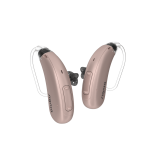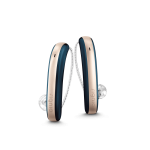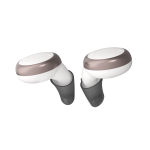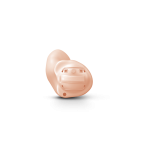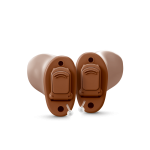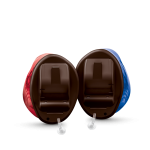What Are The Key Features to Consider When Selecting Hearing Aids for Children?

What Are The Key Features to Consider When Selecting Hearing Aids for Children?
Hearing aids play a pivotal role in
enhancing the auditory experience of children with hearing loss, empowering
them to engage fully in their world. Selecting the right hearing aids for
children involves careful consideration of specific features that cater to
their unique needs. In this blog, we'll explore the key features to keep in
mind when choosing hearing aids for children, ensuring they receive the optimal
support for their auditory development.
1. Size and Comfort:
Children's ears are smaller and more
delicate than adults, making it crucial to prioritize size and comfort. Look
for hearing aids designed specifically for pediatric use, ensuring a secure
fit without causing discomfort. Many modern hearing aids come in various sizes
and styles, providing options for children of different ages and preferences.
2. Durability and Water Resistance:
Children are naturally active, and their
hearing aids need to withstand the rigors of daily activities. Opt for hearing
aids with robust construction and water-resistant features. This ensures
durability against accidental spills, exposure to moisture, and the occasional
unpredictable weather conditions children may encounter during play.
3. Feedback Suppression:
Feedback or whistling sounds can be common
with hearing aids, especially in active children. Look for devices with
advanced feedback suppression technology to minimize these unwanted noises.
This feature not only enhances the listening experience but also prevents
potential discomfort for the child.
4. Connectivity Options:
Modern hearing aids often come equipped
with connectivity options, allowing them to sync with various devices. For
children, this can be particularly beneficial. Connectivity features enable
seamless integration with smartphones, tablets, or other assistive listening
devices, enhancing their ability to participate in educational activities,
enjoy multimedia content, and stay connected with peers.
5. Volume Control and Remote Monitoring:
Children's hearing needs can change over time, necessitating adjustments to the hearing aids. Devices with easily accessible volume controls allow parents and caregivers to make necessary changes based on the child's evolving requirements. Some hearing aids also offer remote monitoring capabilities, enabling healthcare professionals to fine-tune settings remotely, ensuring optimal auditory support.

6. Program Options for Different Environments:
Children find themselves in various
acoustic environments, from quiet classrooms to bustling playgrounds. Look for
hearing aids with multiple program options that can adapt to different
settings. Some devices automatically adjust settings based on the environment,
while others allow manual selection of specific programs for optimized hearing
in different situations.
7. Directional Microphones:
Directional microphones are invaluable in
helping children focus on specific sounds while minimizing background noise.
This feature is particularly beneficial in classrooms, where it enhances the
child's ability to hear the teacher clearly and participate in educational
activities.
8. Safety Features:
Considering the curiosity and exploratory
nature of children, safety features are crucial. Look for hearing aids with
secure battery compartments, tamper-resistant controls, and reliable locking
mechanisms. These features help prevent accidents and ensure the child's safety
while using hearing aids.
9. Pediatric-Friendly Designs:
Hearing aids come in a variety of designs
and colors to appeal to children. Choosing a device with a design or color that
resonates with the child's preferences can foster a positive attitude toward
wearing hearing aids. Some manufacturers even offer customization options, allowing
children to personalize their devices.
10. Tele coil Technology:
Telecoil technology enables children to
connect directly to hearing loop systems commonly found in public spaces,
theatres, or classrooms. This feature enhances their ability to hear more
clearly in environments equipped with loop systems, promoting a more inclusive
auditory experience.
Selecting hearing aids for children
requires a thoughtful consideration of their unique needs and developmental
stages. By prioritizing features such as size, comfort, durability, and
advanced technological capabilities, parents and caregivers can ensure that
children with hearing loss receive optimal support for their auditory
development. Consulting with pediatric audiologists and keeping abreast of technological
advancements can further assist in making informed decisions and providing
children with the best possible hearing aid solutions. With the right devices,
children can embark on a journey of exploration, learning, and social
interaction with the confidence that they can fully engage in the world of
sound around them. For any query or concerns please Call us on 96 5839 5839,
our customer support team will assist you further, or Mail us at
customercare@aanviihearing.com.

